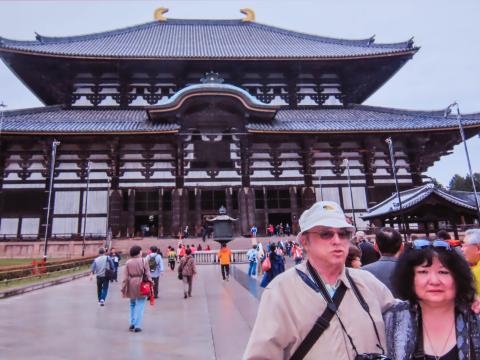Okinawa
(Kennedy, 1994) Okinawa had immense advantages with its deep harbor, airfields and could be a staging place for the eventual attack on Japan itself only 350 miles away. It could be a harborage for crippled B-17s returning from Tokyo. But first it had to be taken from the heavily entrenched Japanese. (Morison, 1965) General MacArthur came up with the idea of leap frogging the most fortified islands and letting them “die on the vine”
On Easter Sunday April 1, 1943, the Marines landed on the beaches of Okinawa. (Miller, 2001) This volcanic island was 60 miles long and 2 to 18 miles wide separated by low stone walls of heavily terraced rice paddies; in short it looked like a picture postcard when they arrived. But the jungle was filled with poisonous snakes. While headed to Okinawa, General Jimmy Doolittle with his crew landed and then took off for the (Pearson, 1979) and dangerous flight for the bombing of Tokyo.
By coincidence, when they reached Japan they were having an air raid drill so Doolittle and his crew were able to slip in without detection, according to Walter Cronkite. What luck! As the ships were sailing for Okinawa, a major hurricane struck with gale force winds tearing off the front of one ship! (Pearson, 1979) The typhoon season in Okinawa is from April through October, a hard time to fight.
(Miller, 2001) When they hit the beaches of Okinawa there were no gunshots! Where was the enemy? Americans wondered on those first days on Okinawa. Had the Japanese played some kind of strange April Fool’s joke on them?
“I may be crazy but it looks like the Japanese have quit the war,” Admiral Turner radioed Admiral Nimitz.
The Americans were lucky in finding that offshore Karama Island had 350 suicide boats loaded with high explosives that were to be used against the fleet but it was disabled, thus removing this major threat to the ships.
(Miller, 2001) There were 1,500 ships with half a million men. They were hoping to turn Okinawa into an “England” (as in England was used for launching attacks on Hitler) as a launching site for the attack on Japan. The Japanese had 110,000 defenders and 20,000 Okinawa conscripts. But they had lost most of its carriers (“flattops”) in the Battle of Midway. The Japanese people were never told of the loss at Midway!
(Morison, 1965) The Americans controlled the sea so there was no chance for the Japanese to reinforce its troops. However, they had 350 kamakaze “Divine Wind” suicide planes. These were developed partly because the U.S. Navy had invented the proximity fuses for its anti-aircraft shells, which made it impossible for a conventional bomber to hit a ship. But, even still, 32 ships were sunk and 62 others were so badly damaged that they were taken out of service. No single aircraft carrier or battleship was sunk but the destroyers took a fatal beating. The British ships fared better since their decks were made of steel unlike wooden American decks. After the war Admiral Nimitz said that he had never anticipated the kamikaze attacks in his wildest dreams.
(Leuchienburg, 1964) Because of the fierce and suicidal resistance, it was seen by Truman and others that an attack on Japan would have too many dead and casualties so the atomic bomb was developed in the tarpaper town of Hanford, Washington and in Oak Ridge, Tennessee.
Both were top secret. In fact, Oak Ridge didn’t have any street names intentionally to make it hard for spies to find anything! It was called the Manhattan Project.
(Morison, 1965) Japanese General Tojo told General McArthur after the war that there were three reasons for his winning the war: (1) Leap frogging islands, (2) success of US submarines against merchant ships and (3) the projection power of US carriers that defeated his country.
The Missouri, the largest battleship, came into Tokyo Bay at surrender. General MacArthur signed the surrender documents and gave two pencils to officers who had just been released from prison camps: Jonathan Wainwright who had been forced to surrender at Corregidor, and General Percivial, the ill-starred commander of Singapore.
(Newark, 2001) Japanese losses were staggeringly high with 107,000 killed and possible 22,000 more buried alive in caves by American soldiers who preferred to seal up the defenders rather than risk their own lives by trying to capture them. This was a dress rehearsal for the invasion of Japan but it was felt that the cost in lives would be too great (7, 1988) so the Manhattan Project was created to build an atomic bomb. In 1939, Albert Einstein wrote a letter to President Roosevelt persuading him to support this work and a check for $6,000 was written to start work on the research in 1940.
The first atomic bomb was exploded in New Mexico in July 16, 1945. By this time the cost of the Manhattan Project had grown to $2,000,000,000! The first bomb was dropped on Hiroshima on August 6, 1945, after Japan refused to surrender. I have visited Hiroshima and the Atomic Dome.
- Log in to post comments



